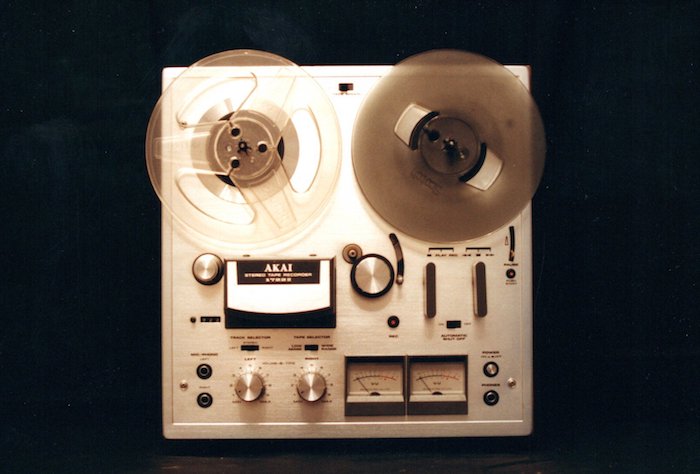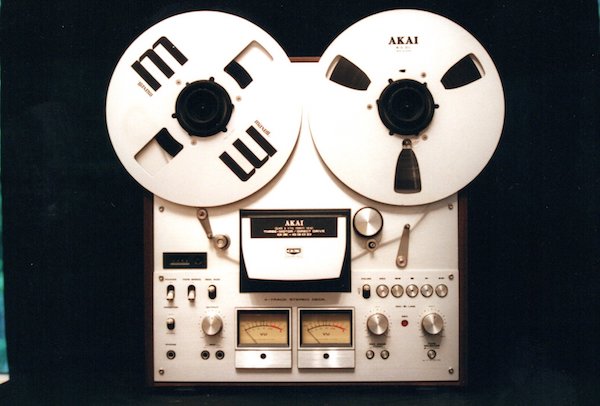Open Reel Forever!
In the late 1990s I was so enthused about open reel tape machines I created a website dedicated to them. It was programmed and uploaded with a "Web TV" terminal and a phone line...I guess I had more patience for upload speeds back then. Anyway- with the renewed interest in open reel machines, I thought it was high time to dust off the floppy discs, convert those .txt files, rescan those pictures, and put the site back up. I will do some updates later on, I know that there were more machines listed than are here now, but I'm not sure what happened to the files. Now let's hop in the time machine and go back to 1999...
---------------------------------------------------------------------------------------------------------------------------------------------------------------------------
Welcome to Chris Nagorka's Open Reel Page, where I will be sharing my enthusiasm for the subject with descriptions of the tape decks I've owned and worked on. In addition, there will be commentary on each machine, including where I got it, how much it cost, and technical comments.
Unless otherwise noted, all of the decks here use the standard home-audio open reel format of 1/4"tape, quarter track. A "two speed" machine runs at 3 3/4 in/sec and 7 1/2 in/sec, a "three speed" machine adds 1 7/8 in/sec.
Akai 1722-II
DESCRIPTION: This is a late '70s two speed, two head deck which takes 7" reels and has mechanical controls. It's a one motor deck, with built in speakers on the sides of the machine. It has a switch on the back which controls if the speakers are on or not, and even includes a position for the deck to be used as a small P.A. system. It has the typical aluminum front/wood side styling and contains the usual controls and accessories of its era. This little guy had a shipping weight of 29 pounds, and cost $475.00 in the 1980 Burstein-Applebee catalog.
COMMENTS: This was the deck which really started it all for me, and made me realize how good these things can sound. I found it in the choir room of a church in Princeton, West Virginia, during my day job as a pipe organ technician (you'll see I've found a lot of these this way!). I traded a service call worth $150.00 for the deck, which was a little steep, considering it didn't work very well. This deck was refurbished by Huffman Electronics in Charleston. A typical Akai product, it's particularly well made machine. Even though it doesn't have tape lifters, the playback noise during fast winds isn't too bad. One funny little quirk about how it operates: unlike most one motor tape decks, with this one, the speed change is accomplished by changing the voltage going to the motor, rather than the usual bit of having the motor run at a constant speed and have various idlers and pulleys change the operational speed. The upshod is that the fast forward and rewind run in double and half speed depending on the tape speed switch! This can be dangerous- if you switch the speed down while you're in one of those modes, the reel with the tension will, in effect, become slack, and tape will spill all over the place. Overall, though, a superb little machine.
Akai GX-630D
DESCRIPTION: I'm thinking this is late '70s also. This is a two speed, three motor, three head deck which takes 10.5" reels and has full motion sensing, solenoid controls. A unit with Dolby noise reduction was available as the GX-630DB. It uses Akai's glass and ferrite "GX" series heads.Typical aluminum face/wood side styling.
COMMENTS: The pride of the fleet, I found this deck for sale in a local classified-ad type newspaper, and paid $300.00- a lot, to be sure, but this one is absolutely mint, and came with its owners manual and original Akai take up reel. This is, quite simply, the finest consumer open reel I've ever seen. The only deck which I can imagine topping it is the Revox B-77, which I've never had a chance to try. Everything works so smoothly and quietly, one can think of it as the Lexus of tape decks. The solenoid controls are round soft-touch buttons, which only move about 3/32". The tape lifters and mute circuits work very effectively, so you aren't subjected to the sound of the recorded material speeding up as you fast forward and rewind. I've never had the slightest hint of a mechanical problem, and I've used this one a lot. If you find one in any sort of decent shape, snag it!
(Note that over twenty years on, the pair of Akai machines on this page are still my favorites. The 1722 is used daily in my office for background music, and the GX-630 is in an equipment rack downstairs in the big stereo system.)


